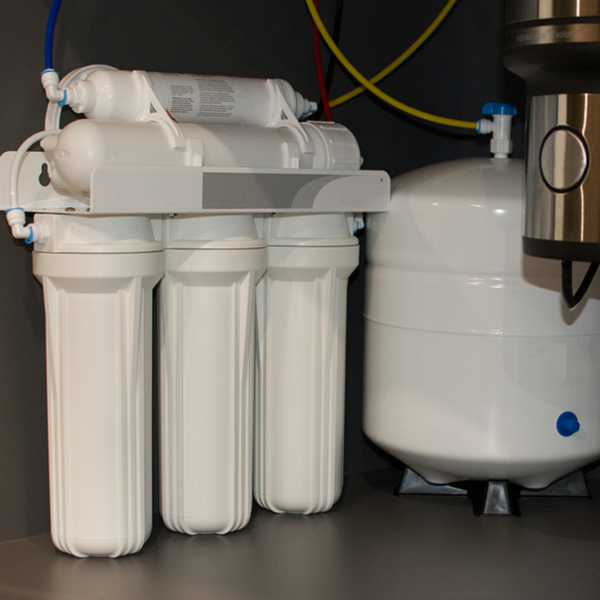How to Remove Fluoride From Your Drinking Water
The United States Public Health Service recommended adding fluoride to drinking water in the 1960s to prevent tooth decay and improve dental health. And it worked. Tooth decay among children fell by nearly 60 percent. However, many people are concerned with added fluoride and want to remove it from their drinking water. In this post, we look at what fluoride is, why there is controversy surrounding its addition to water, and how to remove it.
 What is Fluoride?
What is Fluoride?
Fluoride occurs naturally in soil, water, and certain foods and has been used in dental products for decades. Fluoride is beneficial for strengthening tooth enamel and protecting it against acid from the bacteria in your mouth, which can cause tooth decay.
What’s the Controversy?
While fluoride added to drinking water has many benefits and has been shown to lower tooth decay in children and adults, there’s a growing concern among certain people. There’s speculation that long-term fluoride consumption harms your health, and here’s why.
Dental Fluorosis
Dental fluorosis is when teeth become brown or discolored, and it’s associated with overexposure to fluoride. Dental fluorosis is typically cosmetic; it can cause pitting or enamel erosion in extreme cases.
Skeletal Fluorosis
The symptoms of this condition are joint pain, stiffness, and skeletal abnormalities, and it is also associated with long-term fluoride ingestion.
Thyroid Dysfunction
Some studies suggest that high levels of fluoride exposure could interfere with thyroid function and potentially lead to hypothyroidism or other disorders.
Neurological Effects
Fluoride exposure is also thought to be linked to lower IQ scores and other cognitive defects, although the data isn’t conclusive.
Increased Cancer Risk
Some people debate that excessive fluoride consumption is linked to certain cancers; however, the American Cancer Society (ACS) dismisses these claims. Some studies suggest a link between fluoride and some cancers, but the ACS says the studies haven’t considered other factors influencing the results.
Although fluoride in drinking water has positive results, more isn’t better. The Centers for Disease Control recommends that adults limit their fluoride intake to no more than 0.7 milligrams per liter (mg/L) and children no more than 0.7 mg/L in their drinking water.
The problem occurs when municipal water suppliers add too much fluoride or don’t perform adequate testing. That’s why it’s best to get your water tested if you’re concerned about the fluoride levels.
How to Remove Fluoride From Drinking Water
A reverse osmosis filter is the most effective way to remove fluoride from tap water. Reverse osmosis filters use pressure to push tap water through the filter to remove fluoride and other impurities. While there are other methods to remove fluoride, such as distillation, activated alumina defluoridation, and membrane filtration, they’re not as effective as reverse osmosis, which can remove up to 92% of the fluoride.
Other Benefits of a Reverse Osmosis Filter
While reverse osmosis filters are excellent for removing fluoride, they provide other benefits too, such as:
Better Tasting Water
Even if you’re not concerned about fluoride, you’re probably one of the millions of Americans that buy bottled water because you don’t like the taste of your tap water. A reverse osmosis filter removes the impurities that give tap water its bad taste.
Healthier Water
Municipal water treatment plants remove impurities in drinking water, such as lead and pathogens, and they’re required by law to test regularly and publish reports on their findings. However, when the water travels through the city’s plumbing system to your house, it can pick up these and other impurities before it reaches your tap. A reverse osmosis filter ensures that the water you get from your faucet is clean and healthy.
 Money Savings
Money Savings
Americans spend up to $16 billion on bottled water annually. The average cost for bottled water is approximately $1.27 per gallon. However, the average price of tap water in the United States is roughly $0.002 per gallon or less than one cent per gallon. The money you save not purchasing bottled water will more than pay for installing a reverse osmosis filter.
Call Tri-Florida Water Treatment
If you’re concerned about the fluoride in your water or other contaminants, call the water experts at Tri-Florida Water Treatment for a free in-home water analysis at 863-965-1439 or fill out our online form, and we’ll get right back to you.
